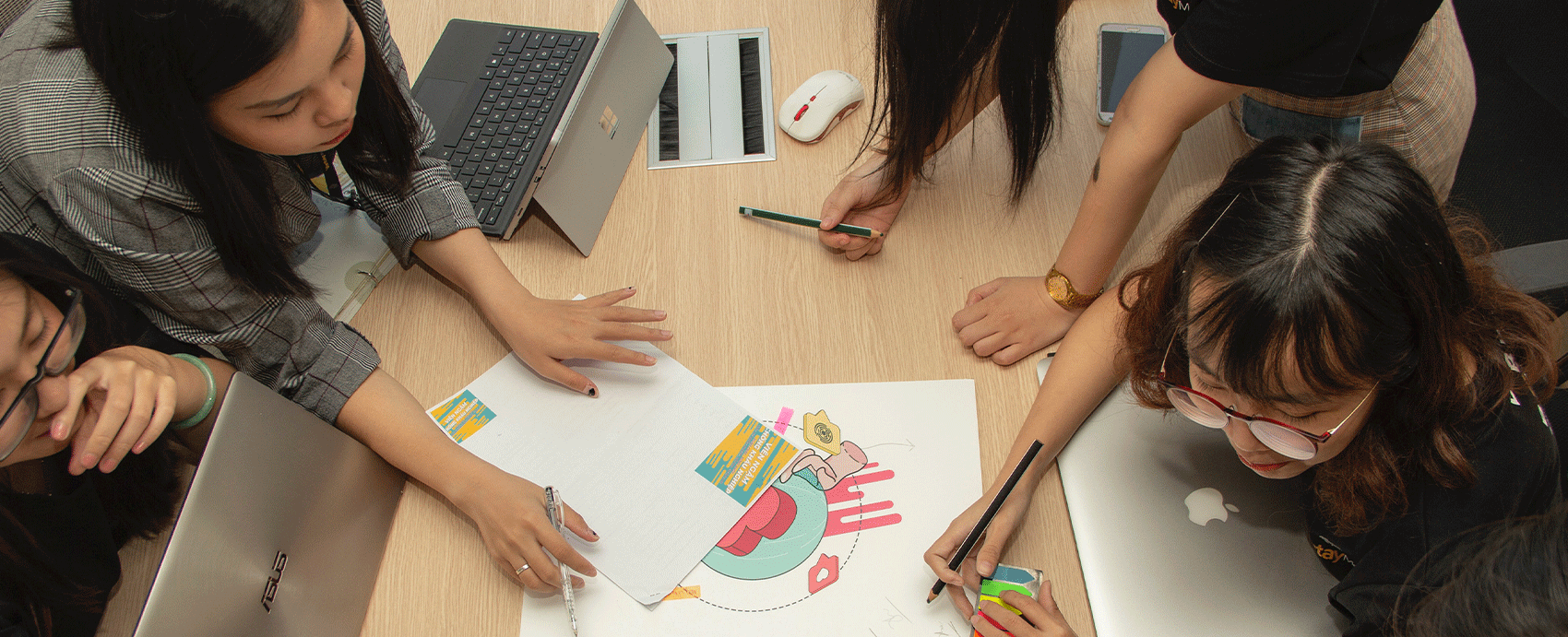
In our previous blog post, we introduced modern eLearning. One of the themes we wanted to highlight in that introduction is that modern eLearning content delivers superior learning outcomes when it is creative, versatile, and pedagogicalally structured.
Here we will look at the subject of rich content and how applying that same creativity, versatility, and pedagogy to its design helps companies meet their learning needs.
If you’re not familiar with the term rich content, we can break it down into three main types.
Text and visual content
- Rich text
- Illustrations
- Infographics
- Documentation (such as PDF and Word files)
Interactive and gamification elements
- Avatars
- Simulations
- Drag and drop
- Timed elements
- Interactive plots
- Clickable elements
- Choose your own story
- Achievements like levels, badges, and leaderboards
Moving pictures, audio and live content
- Videos
- Webinars
- Audio files
- Animations
- Virtual meetings
In essence, “rich content” means all web-supported content.
Thanks to technical advances in content creation tools for eLearning, it is now easier and cheaper to add rich content, as well as to tailor it to the users’ learning needs.
Of course, rich content can be found on almost any application, portal, or website. So, what makes eLearning different from just visiting a website to read about safety, having a safety application, or watching a safety video, for example?
The learning aspect is the key to great eLearning
The learning aspect should be present in all eLearning courses to ensure that everything – content, exercises, and simulations – is designed to achieve the learning goals that have been set. And, to do that, everything needs to be pedagogicalally designed.
Pedagogic content design restructures and presents information in a way that maximizes the learning results. Information is broken into bite-sized learning chunks, following an established, logically structured framework.
The goal is to make all new information, regardless of complexity, easy to access, easy to digest, and easy to remember.
For example, longer passages of text are rewritten and converted to a variety of media, such as video, audio, animation and interactive elements. This will make the material more engaging – a key factor in achieving superior learning outcomes – and increase the student’s motivation to learn.
So, now our eLearning content is rich and pedagogically designed.
The next boost that it needs in order to be more engaging (and therefore more effective) is to make the learning experience more interactive.
Putting the “active” in interactive
Reading a technical document, watching a demonstration, or listening to instructions are all passive activities. Interactive learning material requires the student to actively engage with the learning material.
Interactivity has a positive effect on engagement levels, the quality of the learning and also on the retention of new information.
How do we make our rich content interactive?
There are a range of interactive exercise types, and the most commonly used are:
- “Choose your own story” scenarios
- “Get the highest score” (to get an achievement)
- “Select the most accurate choice” (with a time limit).
- “Drag and drop” exercises
Another layer of engagement (and enjoyment) can be added by gamifying the exercises. this can be achieved through:
- Achievements (such as levels, leaderboards, and medals or other rewards)
- Simulations, where good or bad situational outcomes depend on the choices made by the learner throughout the eLearning.
For example, if a student gets three correct answers in a row, they could get a reward.
Similarly, the different parts of an eLearning course can be labelled as “levels,” and students will have to complete one level to get access to the next one.
These game-like features not only get students more engaged with the learning material, but also increase their motivation to learn – and their willingness to come back to the learning material again.
The way people take in information has changed during the past decade, and people are no longer ready to sit and passively soak up new information for long periods of time. Now they are looking for quick, condensed solutions that engage their interest on several levels.
Technological developments constantly open up new ways to engage and interact with learners. Here are some idea – old and new – for you to consider applying to your next eLearning.
- Use storytelling techniques: people in every culture share stories or narratives as a means of entertainment, education, cultural preservation and instilling moral values. At minimum, they need a plot, characters, and a narrative point of view. Compelling, emotional stories in eLearning can change the way the user feels, thinks, acts and behaves by engaging them and involving them in your learning narrative.
- Give learners access to real-time interaction with a trainer or coach through virtual meetings. This can be done by creating a portal linked to a training provider’s virtual learning system. The students can then use this link to contact their teacher or coach to supplement their learning. They can ask questions, seek clarification, gain new insights, and get the motivation and encouragement to complete their learning goals.
- Social learning can be applied through communal learning solutions. In essence, this means group learning in a controlled, facilitated environment. Use a webinar tool, for example, to bring learners together regardless of location, so they can interact and engage with each other and the facilitator or coach. The session can be recorded and made available in a learning library for future reference, or it can be added to future eLearning material.
- Familiarity with online groups and forums means that they are increasingly common in eLearning courses. Learners can discuss and share their learning needs and achievements in a secure, closed environment. The information shared there can be used to refine and improve the learning content.
Next time, we will look more closely at the versatility of eLearning: how it can be customized and localized, and how can it be applied to different user roles and learning objectives.
Did you know? Acolad has developed its own in-house pedagogical expertise. With over 40 years of business training experience and more than 200 professional trainers, we offer you the highest-quality learning content via eLearning, virtual training and face-to-face training, as well as webinar solutions! Find out more about how we produce learning content – contact us today!
Want to know how you can deliver engaging content for your users?
If you can't wait for our next elearning blog, then you can already download our completely free eBook on modern eLearning.
In it, you will learn about:
- The benefits of having measurable learning outcomes
- The types of exercises and other content commonly used today
- Four case studies that show how eLearning can be applied to competence development, organizational changes, new product launches, and stakeholder marketing!



